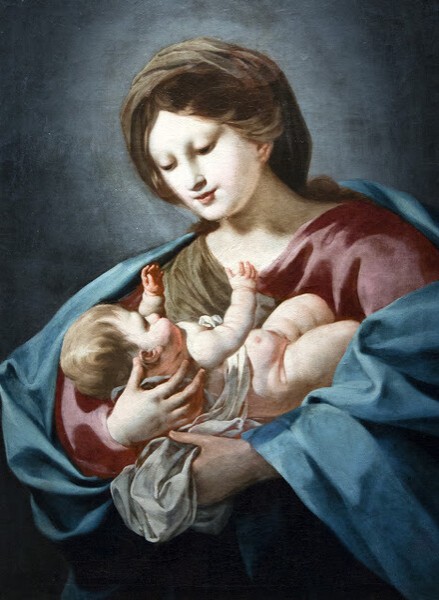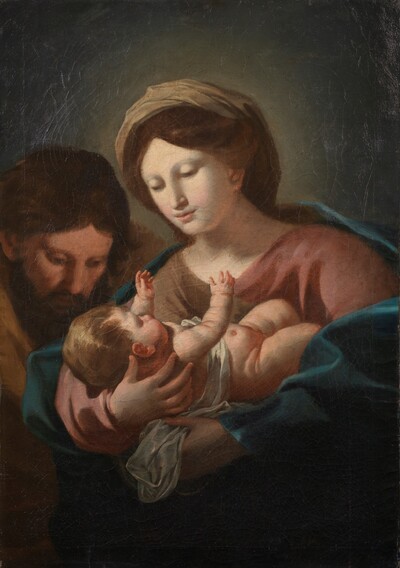- Cronología
- Ca. 1772 - 1773
- Ubicación
- Félix Palacios Remondo Collection, Zaragoza, Spain
- Dimensiones
- 83,7 x 58,30 cm
- Técnica y soporte
- Oil on canvas
- Reconocimiento de la autoría de Goya
- Attributed work
- Titular
- Félix Palacios Remondo Collection
- Ficha: realización/revisión
- 24 Aug 2022 / 08 Jun 2023
- Inventario
- 225
Work probably intended for private devotion, from a collection in Zaragoza. Félix Palacios Remondo Collection, Zaragoza, since 2010. It is possible that in the past it formed a pair with the previous painting of Piety of almost identical measures.
It is the only known pictorial work by Goya that shows only the virgin and Child. On a neutral greyish background, Mary is depicted half-length, holding Jesus in her arms, looking at him with gentleness, but also with a certain sadness (a prelude to his future Passion); at the same time, she extends her arms towards her mother's face, creating an intimate scene of which the spectator is a witness.
The Virgin's model, with delicate features, straight nose, bulging lips and oval face, as well as her composition structure and colorful clothing, is similar to other models created by the artist for the Charterhouse of Aula Dei, the dome Regina Martyrum and the painting Sagrada Familia (1775-1780); the same happens with the model of the Child, with powerful limbs and bulging cheeks. These models clearly show Goya's incorporation of the classicist aesthetic ideas of Anton Raphael Mengs.
Common in the artist is the reddish preparation of the canvas, visible in some areas as an intentional pictorial effect. Infra-red reflectography reveals that he painted directly on the canvas without prior sketching. X-radiography shows that the artist reused a canvas on which a Saint Francis of Paola was painted. Another very similar painting is known in which the artist has added the figure of St. Joseph, Virgin with child and St. Joseph
-
Goya y Zaragoza (1746-1775). Sus raíces aragonesasMuseo Goya. Colección IbercajaZaragoza2015cat. 20
-
Madrid2017
-
Goya y Zaragoza (1746-1775). Sus raíces aragonesasZaragozaFundación Goya en Aragón, Ibercaja y Gobierno de Aragón2015pp.146-149


